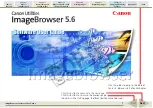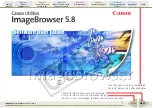
148
Chapter 7: Using Regular Expressions in Functions
The following table describes the special characters for regular expressions:
Special
Character Description
\
A backslash followed by any special character matches the literal character itself, that
is, the backslash escapes the special character.
For example, "\+" matches the plus sign, and "\\" matches a backslash.
.
A period matches any character, including newline.
To match any character except a newline, use [^#chr(13)##chr(10)#], which excludes
the ASCII carriage return and line feed codes. The corresponding escape codes are \r
and \n.
[ ]
A one-character character set that matches any of the characters in that set.
For example, "[akm]" matches an “a”, “k”, or “m”. A hyphen in a character set indicates
a range of characters; for example, [a-z] matches any single lowercase letter.
If the first character of a character set is the caret (^), the regular expression matches
any character
except
those in the set. It does not match the empty string.
For example, [^akm] matches any character except “a”, “k”, or “m”. The caret loses its
special meaning if it is not the first character of the set.
^
If the caret is at the beginning of a regular expression, the matched string must be at the
beginning of the string being searched.
For example, the regular expression "^ColdFusion" matches the string "ColdFusion lets
you use regular expressions" but not the string "In ColdFusion, you can use regular
expressions."
$
If the dollar sign is at the end of a regular expression, the matched string must be at the
end of the string being searched.
For example, the regular expression "ColdFusion$" matches the string "I like
ColdFusion" but not the string "ColdFusion is fun."
?
A character set or subexpression followed by a question mark matches zero or one
occurrences of the character set or subexpression.
For example, xy?z matches either “xyz” or “xz”.
|
The OR character allows a choice between two regular expressions.
For example, jell(y|ies) matches either “jelly” or “jellies”.
+
A character set or subexpression followed by a plus sign matches one or more
occurrences of the character set or subexpression.
For example, [a-z]+ matches one or more lowercase characters.
*
A character set or subexpression followed by an asterisk matches zero or more
occurrences of the character set or subexpression.
For example, [a-z]* matches zero or more lowercase characters.
()
Parentheses group parts of a regular expression into subexpressions that you can treat
as a single unit.
For example, (ha)+ matches one or more instances of “ha”.
Summary of Contents for COLDFUSION MX 61-DEVELOPING COLDFUSION MX
Page 1: ...Developing ColdFusion MX Applications...
Page 22: ...22 Contents...
Page 38: ......
Page 52: ...52 Chapter 2 Elements of CFML...
Page 162: ......
Page 218: ...218 Chapter 10 Writing and Calling User Defined Functions...
Page 250: ...250 Chapter 11 Building and Using ColdFusion Components...
Page 264: ...264 Chapter 12 Building Custom CFXAPI Tags...
Page 266: ......
Page 314: ...314 Chapter 14 Handling Errors...
Page 344: ...344 Chapter 15 Using Persistent Data and Locking...
Page 349: ...About user security 349...
Page 357: ...Security scenarios 357...
Page 370: ...370 Chapter 16 Securing Applications...
Page 388: ...388 Chapter 17 Developing Globalized Applications...
Page 408: ...408 Chapter 18 Debugging and Troubleshooting Applications...
Page 410: ......
Page 426: ...426 Chapter 19 Introduction to Databases and SQL...
Page 476: ...476 Chapter 22 Using Query of Queries...
Page 534: ...534 Chapter 24 Building a Search Interface...
Page 556: ...556 Chapter 25 Using Verity Search Expressions...
Page 558: ......
Page 582: ...582 Chapter 26 Retrieving and Formatting Data...
Page 668: ......
Page 734: ...734 Chapter 32 Using Web Services...
Page 760: ...760 Chapter 33 Integrating J2EE and Java Elements in CFML Applications...
Page 786: ...786 Chapter 34 Integrating COM and CORBA Objects in CFML Applications...
Page 788: ......
















































